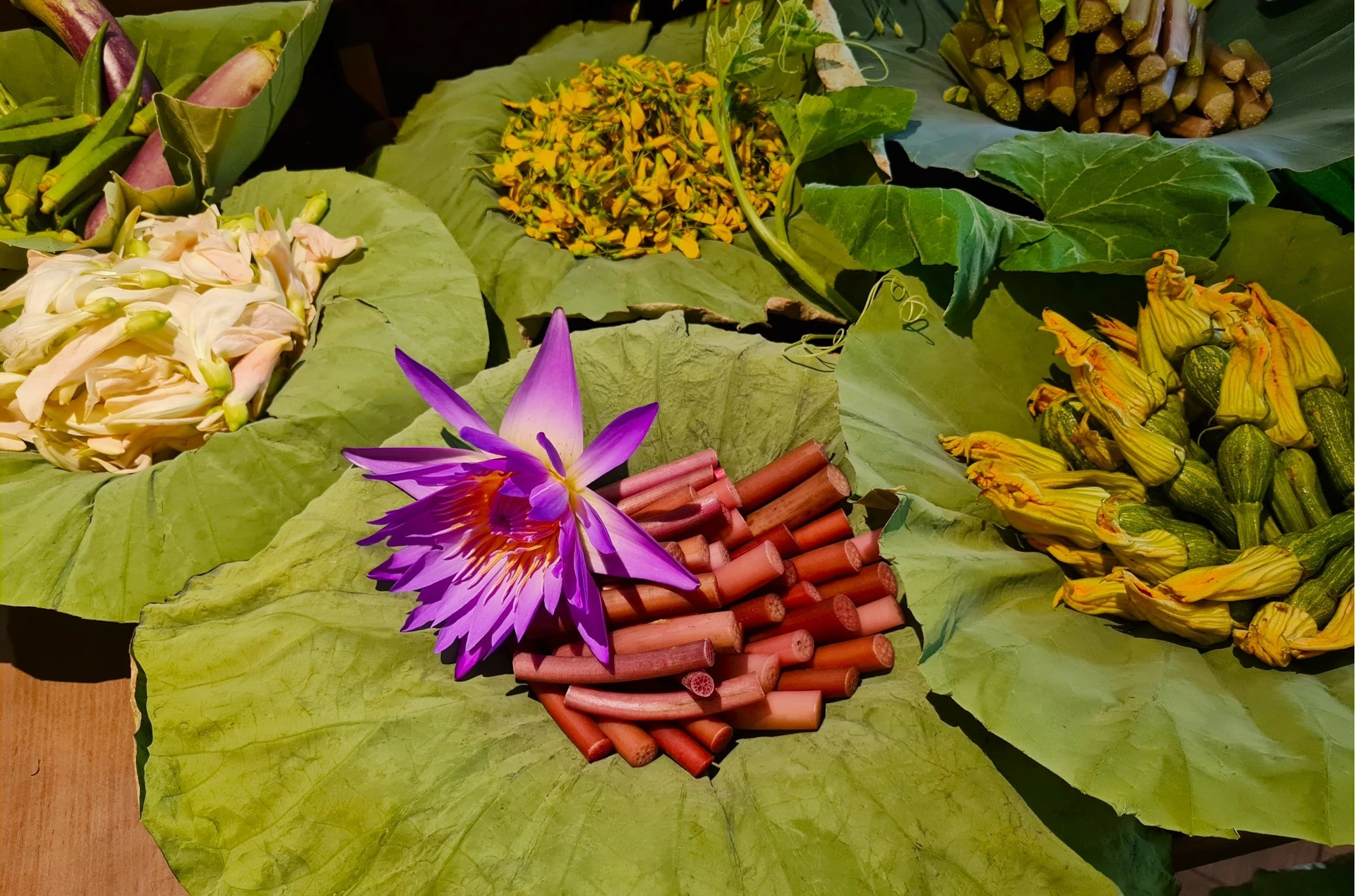
The floating season in the West usually starts around July to October of the Lunar Calendar (August to November of the Solar Calendar) every year. This is a typical natural phenomenon of the Mekong Delta when water flows in from the upper reaches of the Mekong River, flooding low-lying areas, creating a vast river scenery with abundant products. The floating season is also the peak season for tourism in the West. Visitors have the opportunity to experience the life of local people, participate in activities such as boating, fishing, and enjoying specialties.
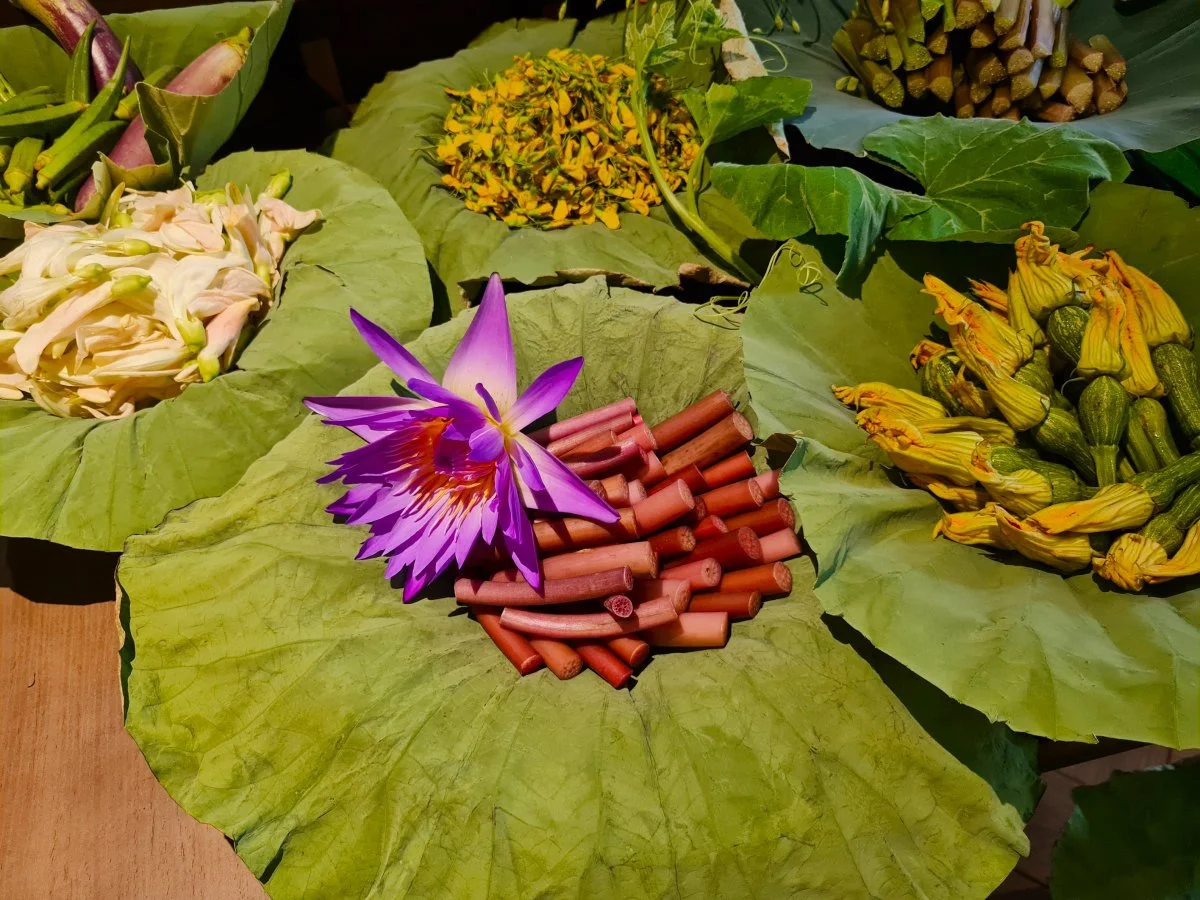
Southwest cuisine is always unique, making people who once enjoy it remember forever. The processing method of Western people is very rustic, simple, not fussy, but mainly relies on fresh ingredients, caught in canals, and picked in the garden. In particular, river cuisine often uses flowers in processing, creating a unique feature of this region. People from other places who come for the first time must be surprised by the colorful flowers that can also be made into fresh dishes.
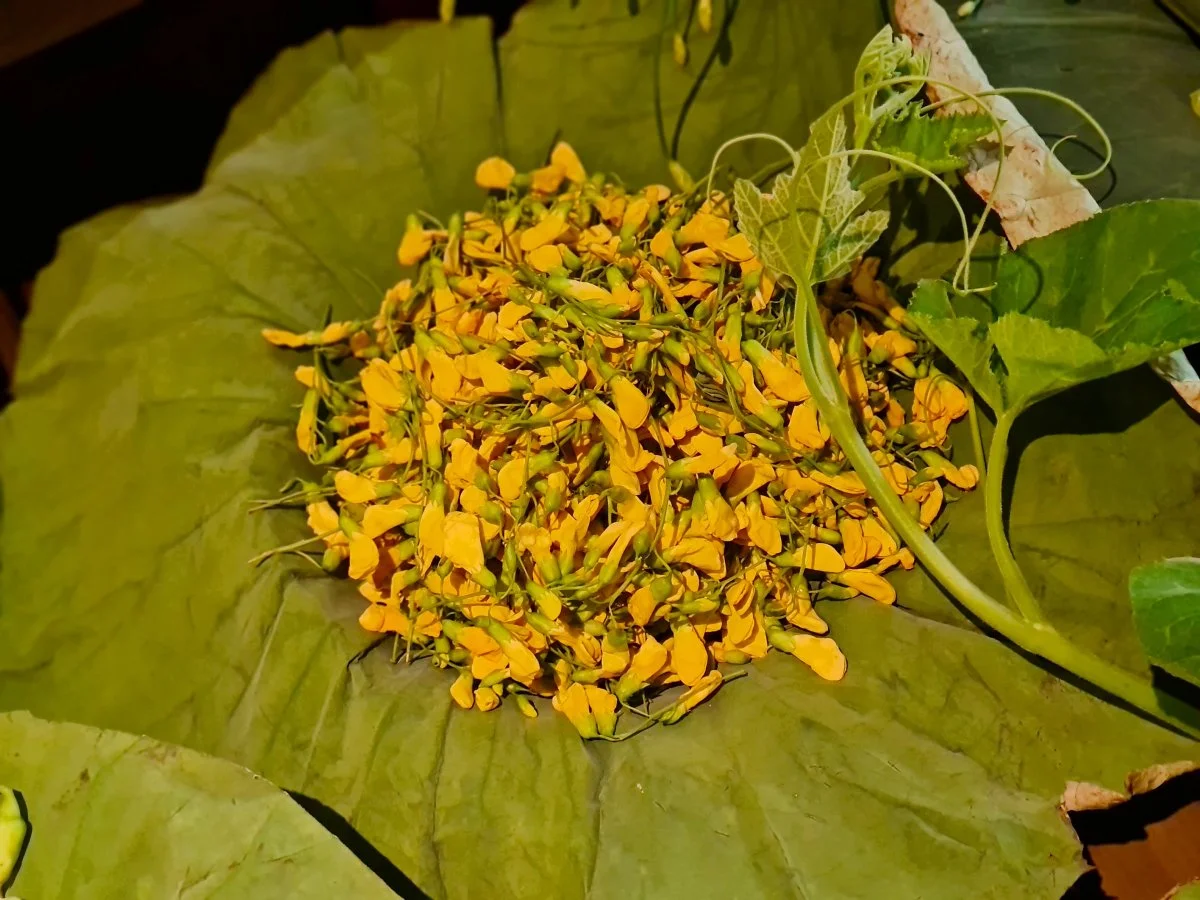
The first thing to mention is the bright and colorful yellow crazy flowers. Crazy cotton often grows wild along canals, ponds or planted along the banks of ditches and open land. Bright yellow flowers, with a slightly bitter taste, often grow wild along canals and canals. Crazy cotton is used to stir-fry eggs, make salads or serve with hot pot dishes, but the most famous is still cooking lingfish soup with the sour taste of tamarind, the sweet and sweet taste of lingfish, and the bitter taste of crazy flowers.
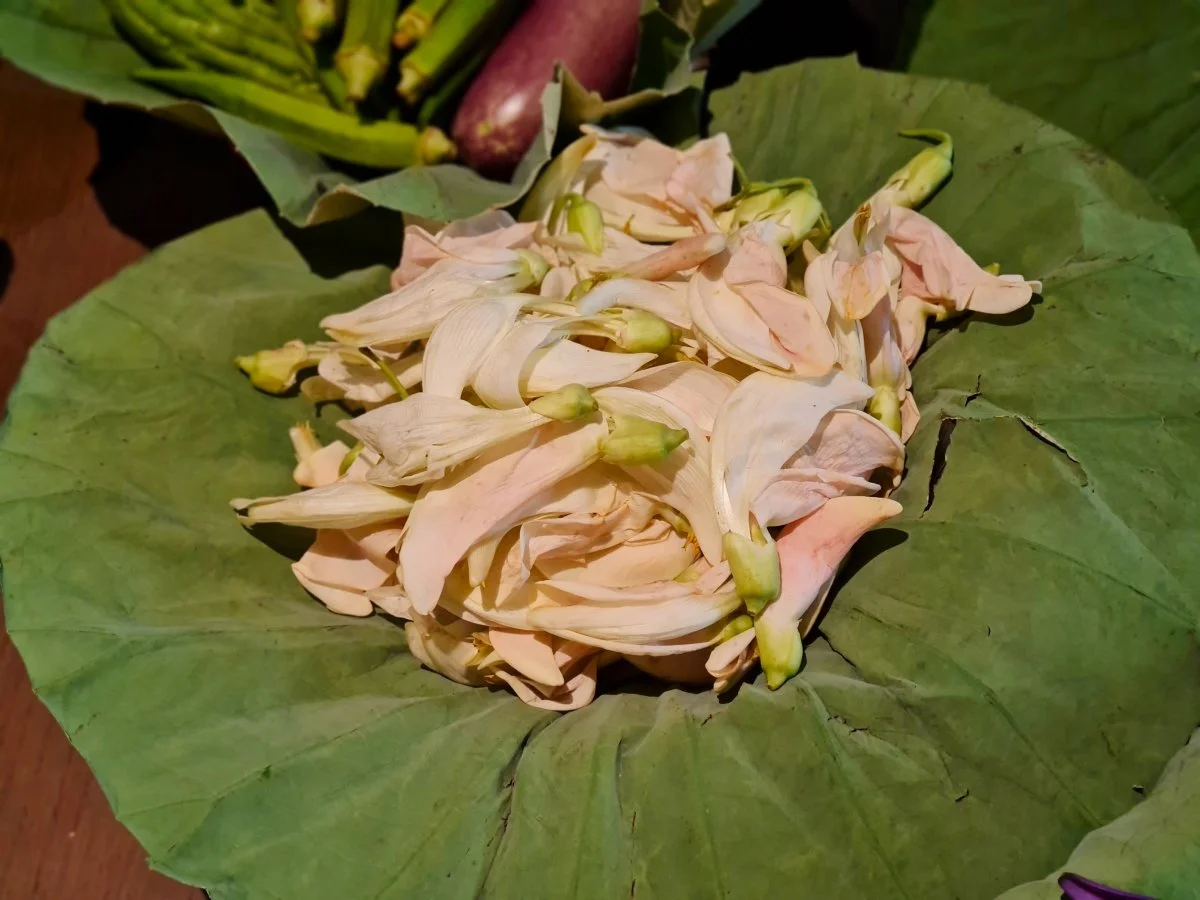
Chopsticks are a familiar plant in the West but are still quite unfamiliar to diners from far away. Cotton has two colors, white and purple, delicate wings, usually blooming early in the morning, so people have to take advantage of picking them, otherwise they will wither very quickly. Pick up the stems, calyxes and stamens inside to avoid bitterness. The most popular dish is to compare chopsticks to cook sour soup with snakehead fish, perch, copper shrimp or stir-fried meat, braised dipping sauce.
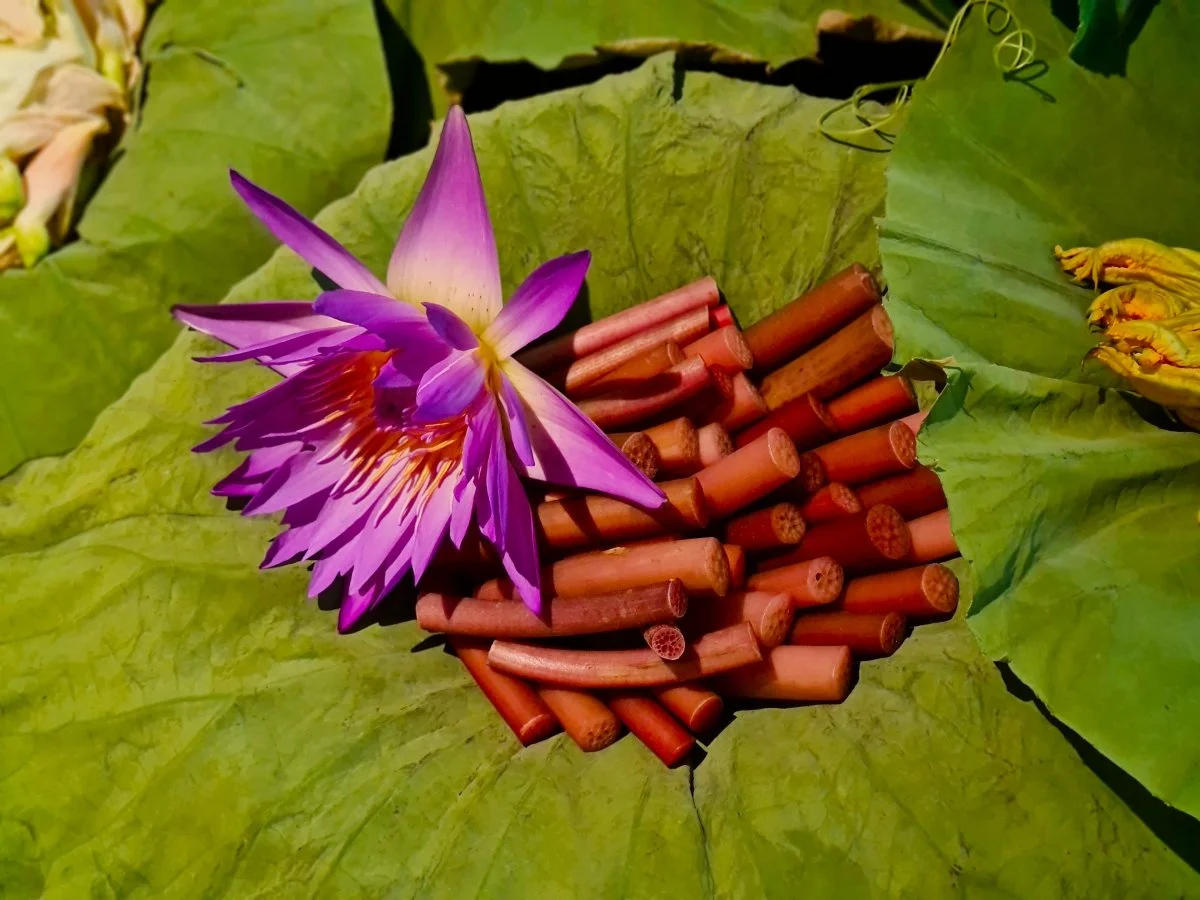
Purple water lilies show off their colors on ponds, lakes and swamps, but the flower stalks are also a very familiar ingredient in Western kitchens. The water lilies are picked and peeled, broken into bite-sized pieces. Water lilies can be processed into many dishes such as: cooking shrimp and sour soup, making salads, mixing vinegar, serving with hot pot, dipping braised fish, full tub salad or simply braised water lilies dipped in fish sauce. The crispy, fresh taste of water lilies goes well with any dish.
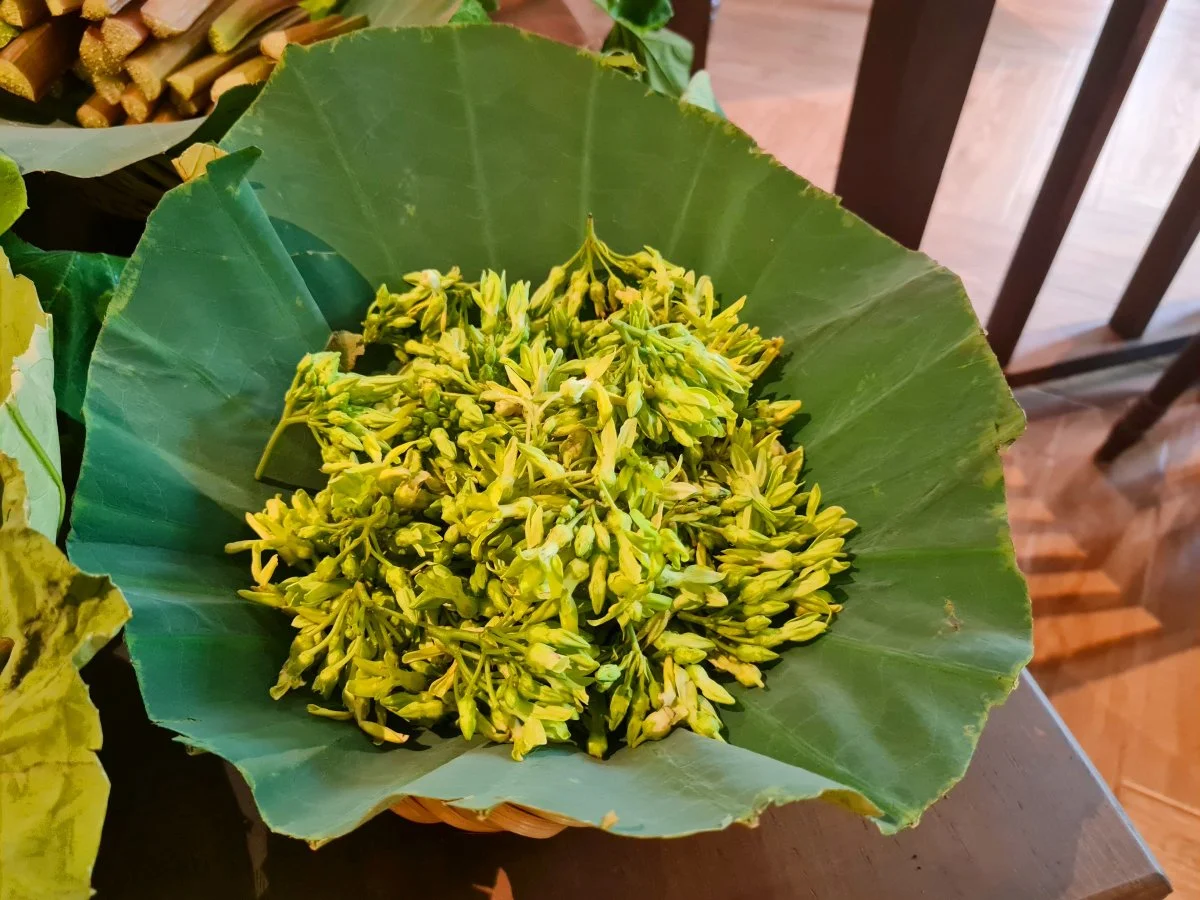
The lily flower is also used in some dishes in the North but in the Southwest, this flower appears in more dishes. The flowers are white or light purple, have a slight sweetness, and a mild aroma. Thien Ly cotton is often used to stir-fry beef, seafood, chicken intestines, cook shrimp soup, crab, howling fish or make dummy. In particular, Thien Ly cotton cooked with field crab is a popular summer cooling dish.
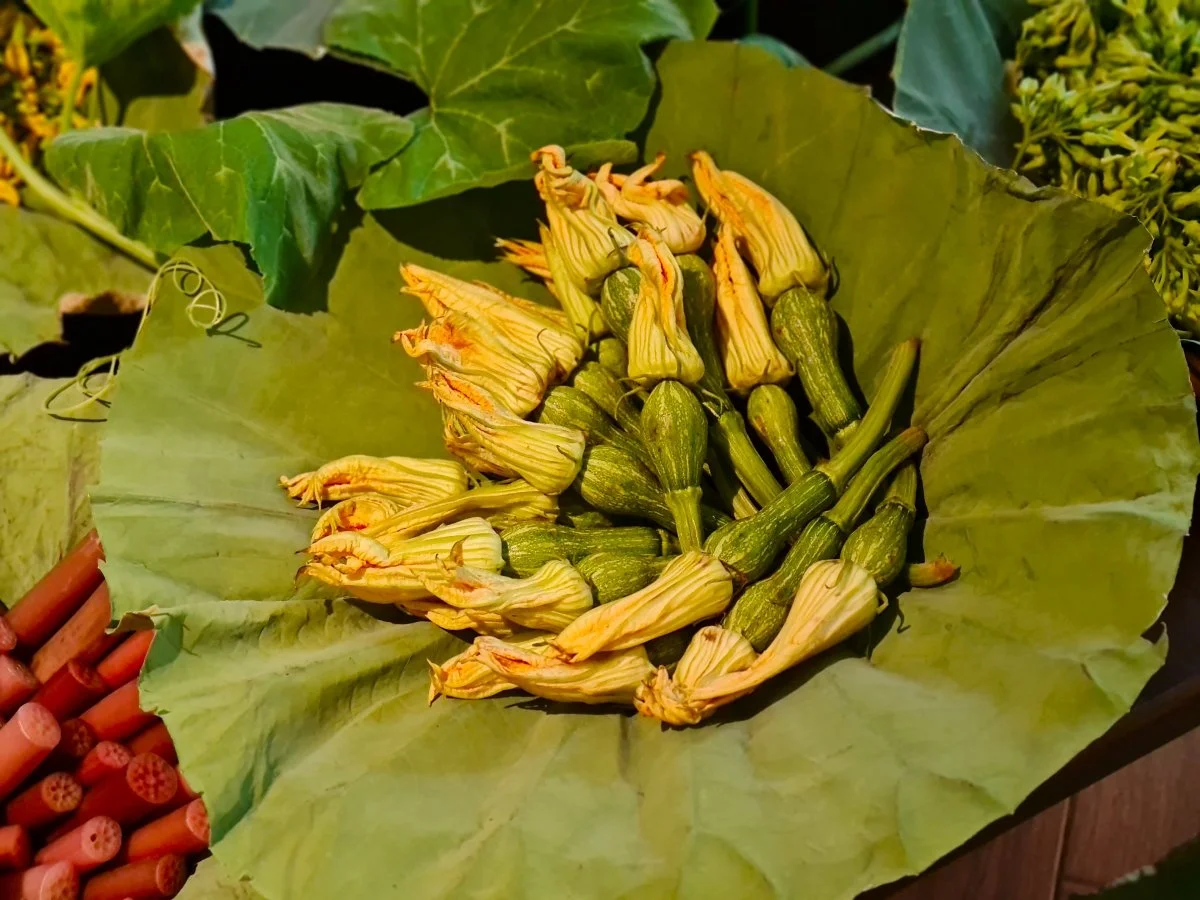
Pumpkin flowers are bright yellow in color, usually blooming in the morning. After picking, the squash is removed from the inner part, washed, then processed such as stir-frying pork, beef, cooking dried shrimp soup, mussels, stuffed with meat. Pumpkin is sweet and cool, not bitter, just boil it and dip it in braised gravy, braised is also delicious.
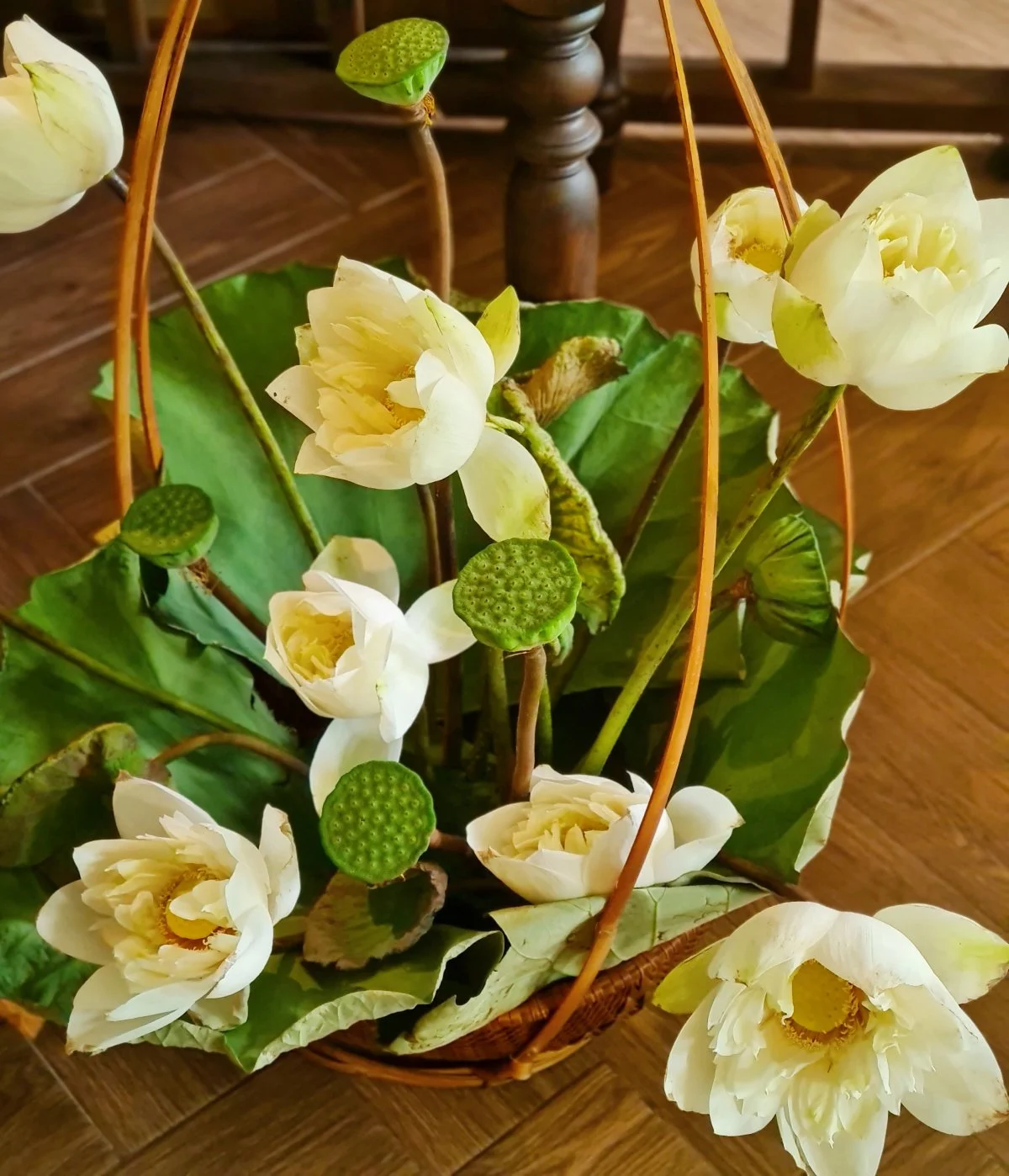
Lotus trees provide many ingredients for Western meals. Lotus seeds can be used to make salads, lotus seeds can be used to cook rice with coconut water, summer detoxifying teas, lotus roots can be used to cook soup, lotus petals can be rolled into spring rolls.
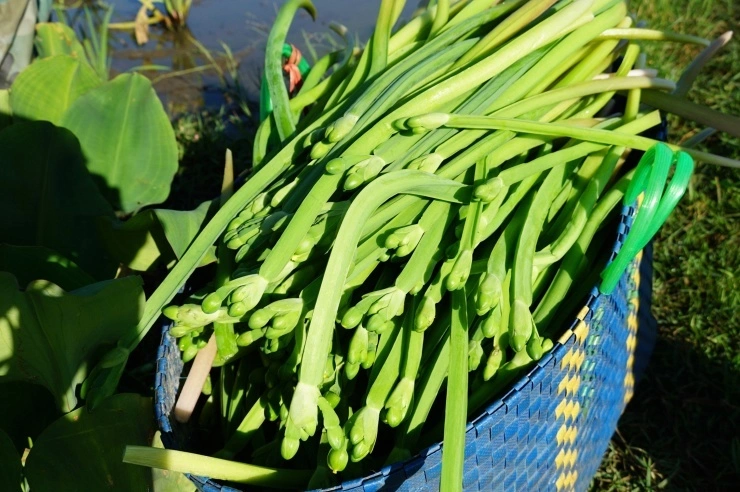
Keo Neo is a wild vegetable, has a crispy and sweet taste, at first the taste is a little bitter, but if you get used to it, you will be addicted. Noodles are indispensable such as processing fish sauce hotpot, dipping stock, squeezing salad, stir-frying garlic, cooking sour soup, dipping hot pot or making pickles. Image: 24h
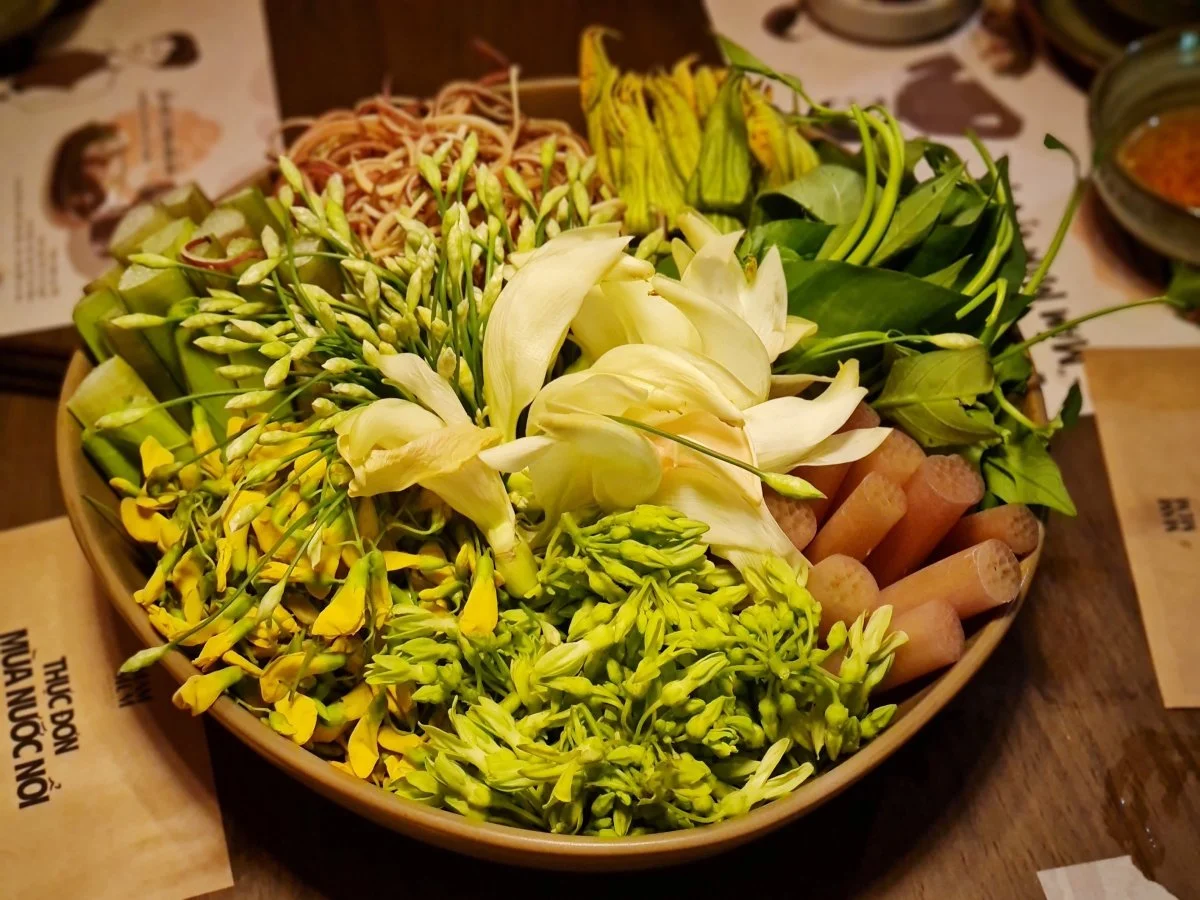
A tray of all kinds of flowers such as water lilies, crazy, thien li, chopsticks, rafters, bananas make up the complete and fresh taste of Western fish sauce hotpot.
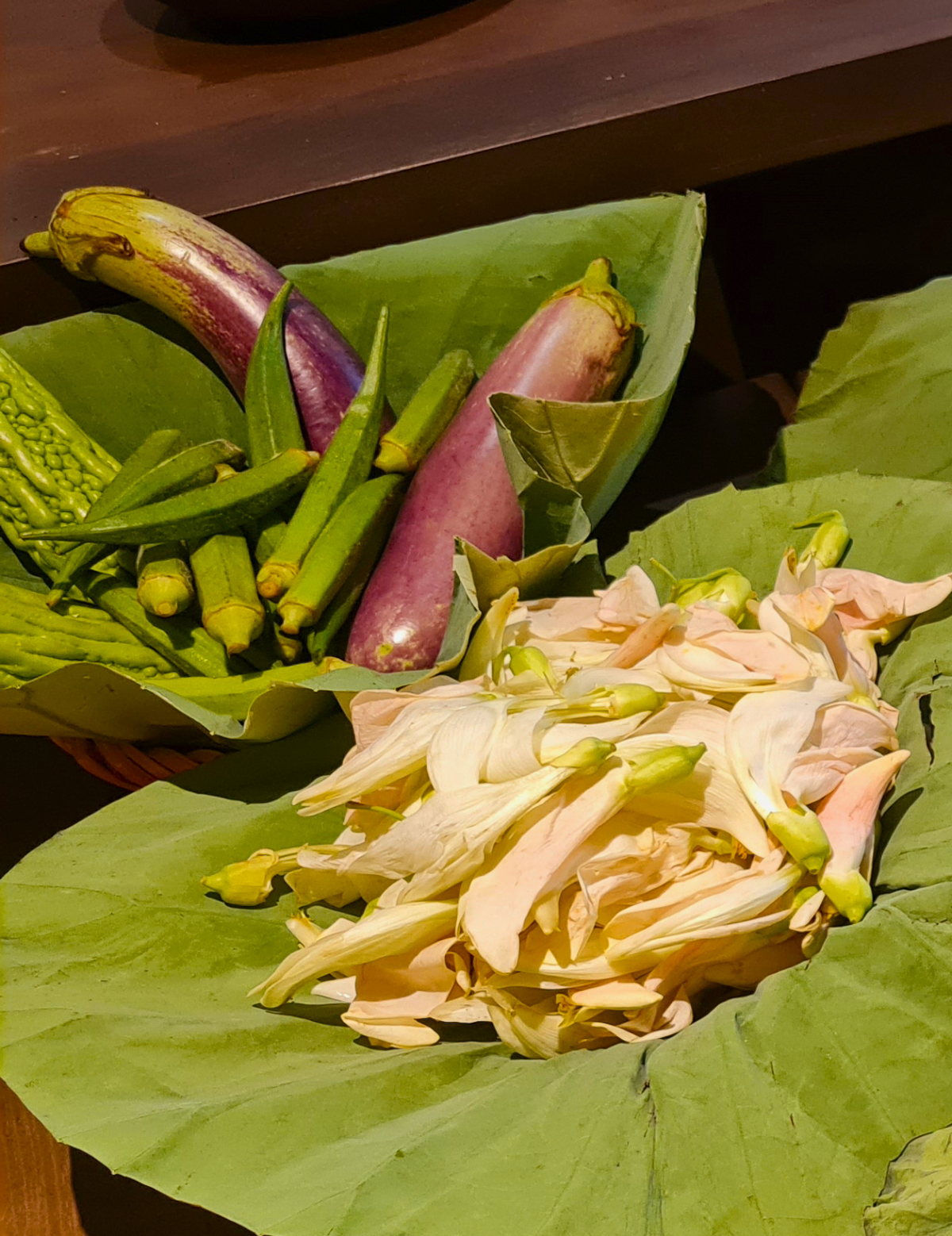
In addition to flowers, some fruits such as eggplant, okra, and bitter melon are also typical of Western cuisine.
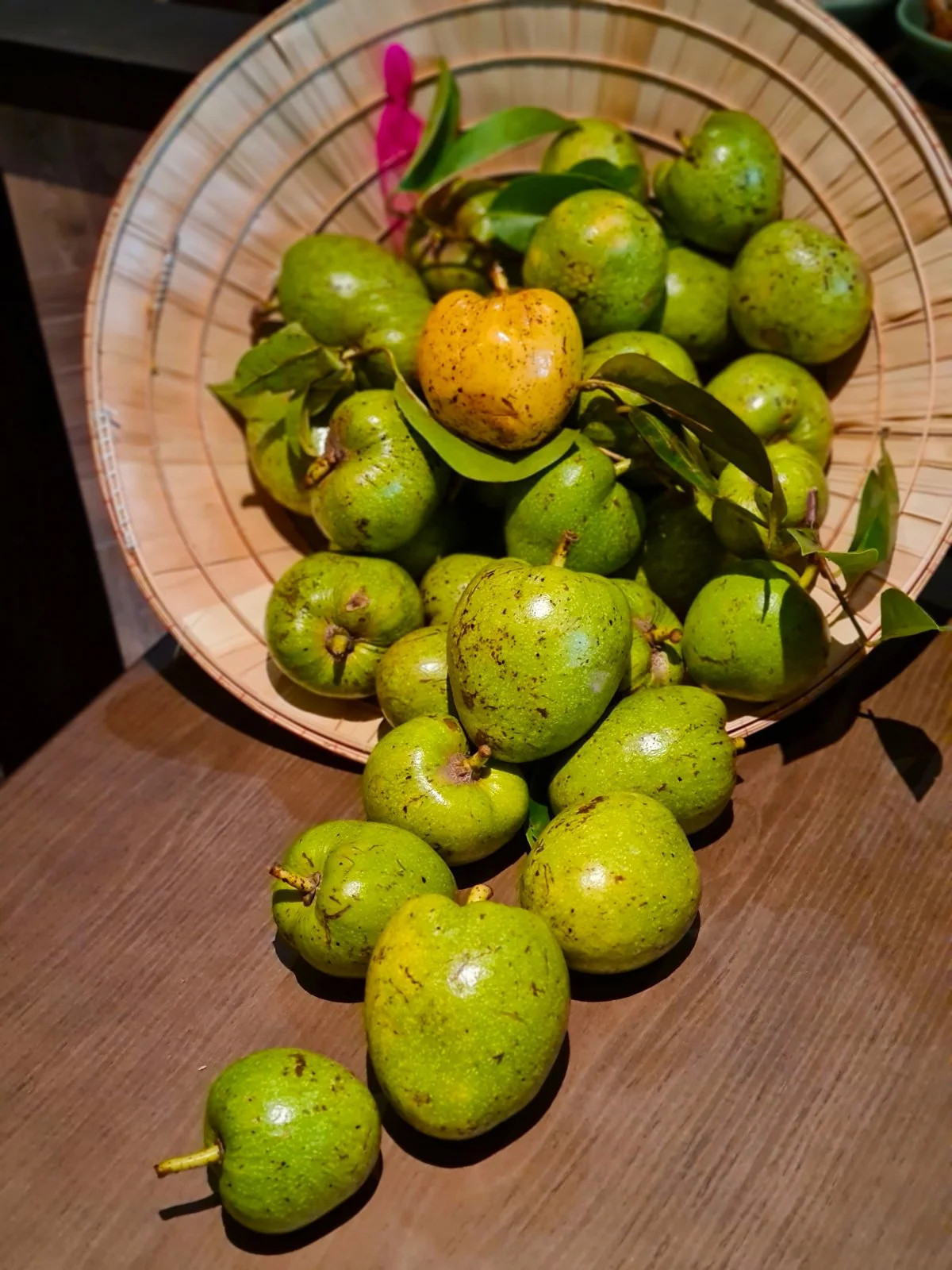
Besides, the bowl fruit is also another unique specialty only in the Southern rivers. The bowl fruit, also known as the guava cork, has a shiny green skin and clear white flesh, when ripe, turns yellow. The flesh is clear white, with many small seeds, a cool sweet and sour taste, very pleasant, often eaten directly, as a dish and smoothie. This is not only a refreshing fruit but also a precious medicine for respiratory and digestive diseases.
Follow the Stars
